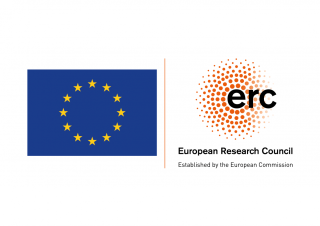AFRAB Exhibition: ‘East African Voices’ exhibition in Mombasa highlights the role of East Africans in the abolition of slavery.
Fort Jesus Museum, Mombasa, Kenya
On 12 September 2024 AFRAB’s team in Kenya opened an exhibition at Fort Jesus Museum, Mombasa, in collaboration with National Museums Kenya. The exhibition highlighted the contributions of several key East African figures who positioned themselves in opposition to slavery.
Some of the prominent figures highlighted include David Koi (also known as Abe Sidi), William Henry Jones, and Seyyid Ali bin Said bin Sultan. Dr Michelle Liebst of UCL, commented: "Typically, exhibitions and heritage sites suggest that Europeans were wholly responsible for the ending of slavery in the East African region, which we know isn't the case. This exhibition highlights the contributions of so many complex historical characters, who took great risks as they opposed the slave trade or slavery."


The exhibition is based on original and secondary research and features a carefully curated collection of images held in African, European and American archives, as well as contemporary art and photography. It is accompanied by a handheld Swahili translation of the exhibition text.
Abdul Rahman Ndegwa, Head of Heritage at Swahilipot Mombasa, noted that, "What stands out about this exhibition is the attempt to bring to the surface these muted narratives about slave trade and enslaved people, and with that the role of coastal communities in both the trade and its abolition.”
Mr Ndegwa continued, “Slave trade in the Swahili coast in the context of people and place is part of our cultural past. We the young people of today need to interact with these narratives through this exhibition and further interrogate its consequences, and really understand how places like Frere Town came to be."
To inform the shape and tone of the exhibition, a workshop was held three months in advance of its opening on 12 June 2024. Bringing together local stakeholders, including activists, community leaders, curators, and administrators, the workshop was a forum for discussion on how slavery and abolition are currently presented in Kenya’s heritage context and schools. The stakeholders advised on how to represent this history to which they are closely connected.

The opening of the exhibition was marked by a symposium involving leading researchers from East Africa including Professor George Abungu (Okello Abungu Heritage Consultants), Professor Samuel Nyanchoga (Catholic University of Eastern Africa), Dr Salvatory Nyanto (University of Dar es Salaam), and Dr Saada Wahab (State University of Zanzibar). The audience of the event included curators, activists, and community leaders who were local to the coastal region of Kenya. Sophie Otiende, a prominent anti-slavery activist in East Africa today, also presented and summarised her survivor-led approach. The final session of the day featured the work of up-and-coming junior researchers from Kenya and Tanzania. Roy Bahati, local Mombasa artist, believes that more events like these, “will contribute immensely on the progress of society as a whole”.




Many of the symposium attendees commented on the importance of bringing this history of East African opposition to slavery to light. Philip M. Wanyama, an Assistant Research Scientist at the Archaeology Department Fort Jesus (National Museums Kenya) noted that, “The discourse on slavery, slave trade should be enhanced and encouraged among the local communities, private and public institutions, policy and decision-makers, rather than silencing it”.
This exhibition features findings from collaborative research conducted in the framework of the project “African abolitionism: The Rise and Transformations of Anti-Slavery in Africa” (AFRAB, which received funding from the European Research Council (ERC) under the Horizon2020 research and innovation program of the European Union (grant agreement no. 885418).












 Close
Close


